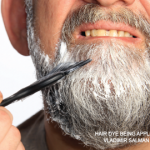“Whatever treatments are on the horizon, don’t be afraid to tell patients that they have a powerfully painful disorder that will get better, but slowly, and that there’s no guarantee that the first, second or even third agent that we use will help,” he said. “I know that sounds negative, but I find that it resonates with patients, because they’ve likely been down this road before. Be bold and creative, and try polysymptomatic approaches.”
Alopecia
Hair loss is commonly seen in lupus patients, but not all alopecia types are the same, said Victoria P. Werth, MD, professor of dermatology at the Hospital of the University of Pennsylvania in Philadelphia. Rheumatologists may encounter lupus->specific alopecia, lupus-nonspecific alopecia or alopecia unrelated to their lupus at all. Alopecia is included in the new ACR/EULAR classification criteria for SLE.
“Lupus-specific alopecia is something I think we’re all very familiar with in these patients. They usually have underlying erythema and scale, and it’s associated with lesions that are due to discoid lupus, sub-acute cutaneous lupus or acute SLE,” said Dr. Werth. Patients may have dispigmentation, permanent hair loss and follicular plugging.
Lupus-nonspecific alopecia is non-scarring. These patients may have “lupus hairs,” or coarse, dry, fragile, very short hairs on the scalp along the forehead. “This can include diffuse areas of non-scarring alopecia which waxes and wanes with systemic disease activity, and can be a manifestation of the telogen effluvium [temporary hair loss] that is not specific to lupus, but we see plenty of it in our SLE patients.”
About 10% of SLE patients have alopecia arreata unrelated to their disease. These patients have circular, totally hairless patches, but no erythema or scale. Their telogen effluvium may happen postpartum, after surgery or due to stress, she said. Some SLE patients also have androgenic alopecia, or typical male- or female-pattern baldness.
Patients with subacute cutaneous lupus or acute SLE may have a temporary hair loss followed by regrowth later, she said. Using a magnifying lens or dermatoscope, loss of follicular ostia can be seen, which means the hair loss is permanent, she said.
Biopsy on a horizontal section of the scalp is one way to diagnose the alopecia type. “Look for the changes of lupus in the skin, look at the different follicles to see what happened to them, and check for follicular scarring,” which means hair is not regrowing and is likely telogen-related, she said.
Incidence is unclear, but lupus-nonspecific alopecia may affect up to 40% of SLE patients. In these cases, hair often regrows when disease activity is controlled. These patients may have short, thin hair along with typical lupus flare symptoms. Medication may also cause this temporary hair loss.

